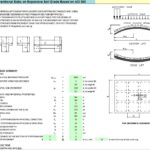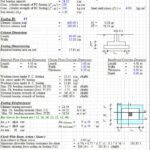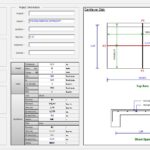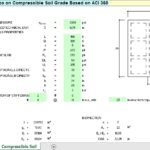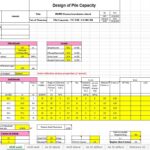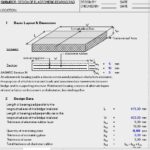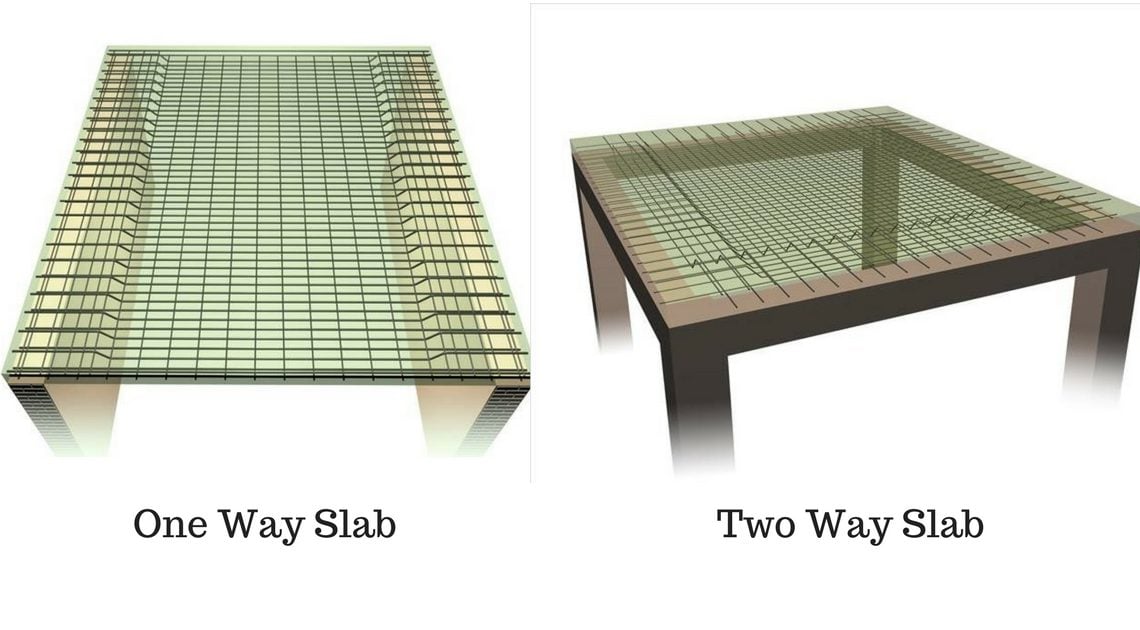
What is a two-way slab?
20 November 2018What is a two-way slab?
A Two-Way Slab “TWS” is simply a slab carrying loads in both directions (length and width) to its supports (Beams or Columns). This is because it’s length to width ratio is (Long/Short) not big enough for loads to travel in the short direction only (width).
Theoretically speaking:
Loads are lazy, they travel in the shortest path possible, they like to spend the least effort.
Slabs have 4 supports to transfer its loads to (2 in each direction).
- Slab: A structural element that has large width and length compared to its thickness. Designed to carry whatever loads the building is meant to carry, and transfer it to its the supporting elements.
- Loads: Slab’s own weight, Slab covering and finish, live loads (people, furniture, machines…etc) etc.
- Supports: Beams or Columns that the Slab is resting on at its 4 edges (could be on . The slab transfers its loads to the supports > Supports transfer its loads to the foundations on the ground > Foundations transfer all these loads to the grounds below the building.
That being said, let’s assume a (10 x 2) Rectangular Slab (width=2m and length=10m) the ratio is large enough (Long/Short = 10/2 = 5) in this case all the loads will travel much faster through the Short Direction which is the 2m width to the nearest supports.
This makes a One Way Slab “OWS”. On this slab loads will not travel in the Long Direction (the 10m length). The slab will carry 100% of the loads to half of its supports through one direction only. (supports on the other direction will not receive any loads from the slab, therefore these slabs can have 2 supports only at the short direction).
- The Length is larger than Double the Width (Long/Short > 2)
- 100% of the Loads Travel in the Short Direction only.
- Only the 2 Supports on this Short Direction will carry the slab and 100% of its the loads.
- We need Reinforcement (steel bars or other) in this direction only to resist the straining actions caused by loads traveling through this direction to the supports.
- We will study and design based on one direction only.
- Slab thickness is design based on short direction only.
Now assume a (5 x 5) Square Slab with ratio (Long/Short = 5/5 =1), in this case loads will travel in both directions equally, since Long=Short they will spend almost equal effort. Each direction will carry 50% of the loads to its supports.
This makes a Two Way Slab “TWS”. In this case all 4 supports are working and they receive almost equal loads from the slab. (The Slab must be supported from all directions).
- The Length is equal to the Width (Long/Short = 1)
- Loads Travel in Both Directions. 50% of the total loads through each direction.
- All supports (2 pairs in each direction) will carry half of the slab and its loads.
- We need equal reinforcement in both directions.
- We will study two directions, but since they are equal, we can design one direction and apply the same to the other.
- Slab thickness is design based on either direction, since they are equal.
If we have something in between the above two cases, assume a (4×6) Rectangular slab (width=4m, length=6m) Which direction will the loads travel through?
The ratio is (Long/Short = 6/4 = 1.5) which is smaller than double the width (1.5 < 2) which means this a “TWS” as well.
The number we compare to the length to width ratio (2) might be different depending on the Application and the Code we are following (which is based on studies and experiments), but here we assume that the breakpoint is the length being over or under double the width.
So this is also a “TWS” where we predict loads travel in both directions, but will each direction carry 50% of the loads? We know that one direction is shorter than the other, therefore more of our loads will prefer to travel through the easier-shorter direction, and less will travel through the longer direction. Supports will receive a percentage of the Slab loads based on the distance it has to travel.
- The Length is smaller than Double the Width (Long/Short <2)
- Loads Travel in Both Directions. The short direction transfers a larger percentage of the loads, the long direction transfers a smaller percentage of the loads.
- All support (2 pairs in each direction) will carry the slab, but each pair will receive different percentage of the loads.
- We need more reinforcement in the short direction (larger percentage of loads > larger bending moment) than we need in the long direction (smaller percentage of loads > smaller bending moment)
- We will study and design each direction separately (different loads, different bending moments, different reinforcement)
- Slab thickness is designed based on the worst case, the larger straining actions we calculate from the Short or Long direction (most probably the short direction)

